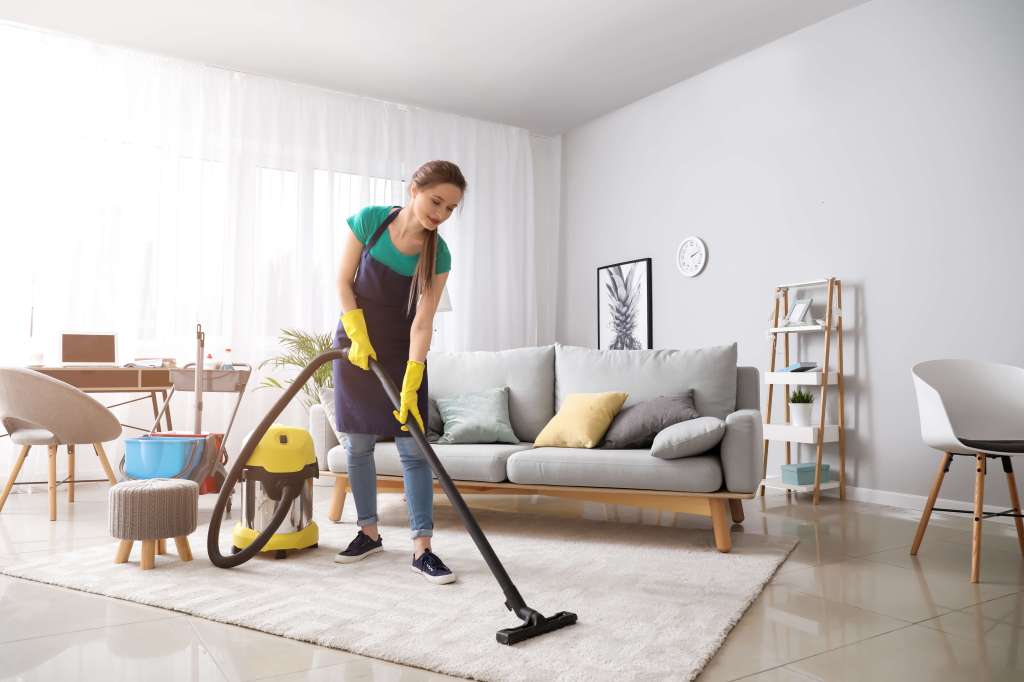When tenants move out, it can be a busy time for landlords as you’ll be sorting out the previous tenancy while preparing for the next one.
Read our end of tenancy landlord checklist to make sure you follow all the right steps, from completing an inspection and inventory check out, to fixing maintenance issues and getting the property ready for new tenants.
End of tenancy checklist for landlords – what do you need to do?
Whether you’re ending the tenancy or the tenant wants to move out, there are a number of steps to follow, including:
- meeting legal obligations, such as giving notice and releasing deposits
- checking the condition of your property, making necessary repairs to protect your investment
- making upgrades and preparing the property for new tenants
Read on for a step-by-step checklist of all the important tasks you need to complete.
Confirming the end of the tenancy
If you want to end the tenancy, you’ll need to give the tenant notice. It’s usually a minimum of 28 days, but it depends what’s in your tenancy agreement.
On the other hand, if the tenant wants to leave, they’ll need to give you notice. The tenant’s notice period is usually around four weeks, but it depends what type of tenancy they have.
Once notice has been given, you’ll need to confirm the end of the tenancy in writing. This will need to include key details such as the date the tenant is moving out.
Some tenants may ask to pay their final month’s rent with their security deposit. It’s best practice to discourage them from doing this as if there is any damage to the property, you’ll need to make deposit deductions to pay for repairs.
End of tenancy inspection
Once the end of tenancy date has been agreed, it’s a good idea to carry out an inspection a few weeks before the tenants move out.
This allows you to go around the property with the tenant and discuss any issues that need sorting before they leave. For example, if there are missing or broken light bulbs, the tenant can replace them instead of being charged when they move out.
Fixing issues before moving out is in the tenant’s interest because it improves their chances of getting their deposit back in full, while for landlords it means there’ll be less to do between tenancies.
What do you need to look out for?
Here are some of the other things you should watch for when inspecting the property before the end of the tenancy:
- faulty smoke alarms or carbon monoxide detectors
- signs of damp or mould
- blocked or broken drains and gutters
- signs of leaks or pests
- significant marks, stains, or damage that doesn’t look like fair wear and tear
- problems with appliances or electrics
As well as an inspection a few weeks before the end of the contract, you’ll need to inspect the property when the tenants move out to see what needs doing before the next tenancy.
Read our property inspection checklist for more tips on what to check.
End of tenancy check out form
One of the most important steps of tenants moving out is completing a check out. This is when either you, your letting agent, or an independent inventory clerk visit the property to check its condition against the original inventory.
The outgoing tenants don’t need to be there, but it’s helpful if they are. The check out is the perfect opportunity to discuss any issues you’re planning to make a deposit deduction for. As a result, the tenant can arrange for things to be fixed or replaced, instead of losing money from their deposit.
During the check out, you’ll also need to take final meter readings and explain to tenants how the return of their deposit works.
Making deposit deductions
Once check out is complete, you’ll need to decide whether you’re going to make any deductions from the tenant’s security deposit. Deductions are often made for things like:
- stains to carpets or worktops
- broken door or window handles
- rubbish or belongings left at the property
However, remember you can’t make deductions for fair wear and tear.
Once you’ve agreed on the final deposit amount with the tenants, you can organise the return of their money. If both sides can’t agree on a final amount, you’ll need to open a dispute resolution case with the deposit protection scheme you use.
Arranging for an independent inventory clerk or letting agent to complete the check out for you, could save you time and stress.
However, if you want to do it yourself, there are plenty of check out form templates and tenancy check out templates that you can use as a guide.
End of tenancy cleaning checklist
You’ll also need to think about cleaning at the end of the tenancy. If renters want to receive their full deposit back, they’ll need to return the property as it was when they moved in. This means they’ll need to do a deep clean, and probably need to hire a professional cleaner.
If they choose not to clean the property, you can clean it yourself (or with the help of a professional) and deduct the cleaning costs from their deposit.
Here’s an overview of some of the key things for you or your tenants to remember when deep cleaning the property:
- bedrooms – pay attention to curtains and blinds, clean all light fittings and switches, and remember hard to reach surfaces such as the top of wardrobes
- kitchen – thoroughly clean and defrost the fridge/freezer, look for grime on extractors, and clean inside all cupboards
- bathrooms – clean behind the toilet, descale all taps and shower heads, and look closely at grouting between tiles
- living areas – take apart the sofa to clean it properly, steam clean carpets, and polish all wooden surfaces
- outdoor space – clear away any debris, cut the grass, and trim the hedges

Releasing the tenancy deposit
Once the final deposit amount, including deductions, has been agreed with the tenant, you have 10 days to release the deposit.
If you use a custodial deposit protection scheme, you’ll need to let them know so they can release the money.
If you use an insured deposit protection scheme, you can pay the tenant and notify the scheme that the deposit has been released.
Our guide to tenancy deposit protection schemes explains more about the difference between insured and custodial options.
Preparing for the next rental
After your previous tenants have moved out and you’ve returned the deposit, you’ll need to start focusing on the next tenancy.
While the property is empty is the perfect time to make repairs, upgrades, and improvements.
If your previous tenancy was a long one, you may need to invest in some new appliances or redecorate the property.
Prospective tenants are likely to have a flat viewing checklist, so you need to make sure your property stands out from the crowd.
Read our guide to decorating a rental property for tips on how often you should paint, replace carpets, and upgrade your kitchen.
After you find new tenants, you’ll need to get the property ready for them to move in. Our pre-tenancy checklist can help you get everything ready, from gas safety and landlord licensing to landlord insurance and deposit protection.
More useful guides for landlords
- A landlord’s guide to zero deposit renting
- How to do a landlord tax return
- A landlord’s guide to sitting tenants
- What do landlords need to know about the How to Rent guide?
- How do I find cheap landlord insurance?
Get set with tailored landlord cover
Over 200,000 UK landlord policies, a 9/10 customer rating and claims handled by an award-winning team. Looking to switch or start a new policy? Run a quick landlord insurance quote today.
